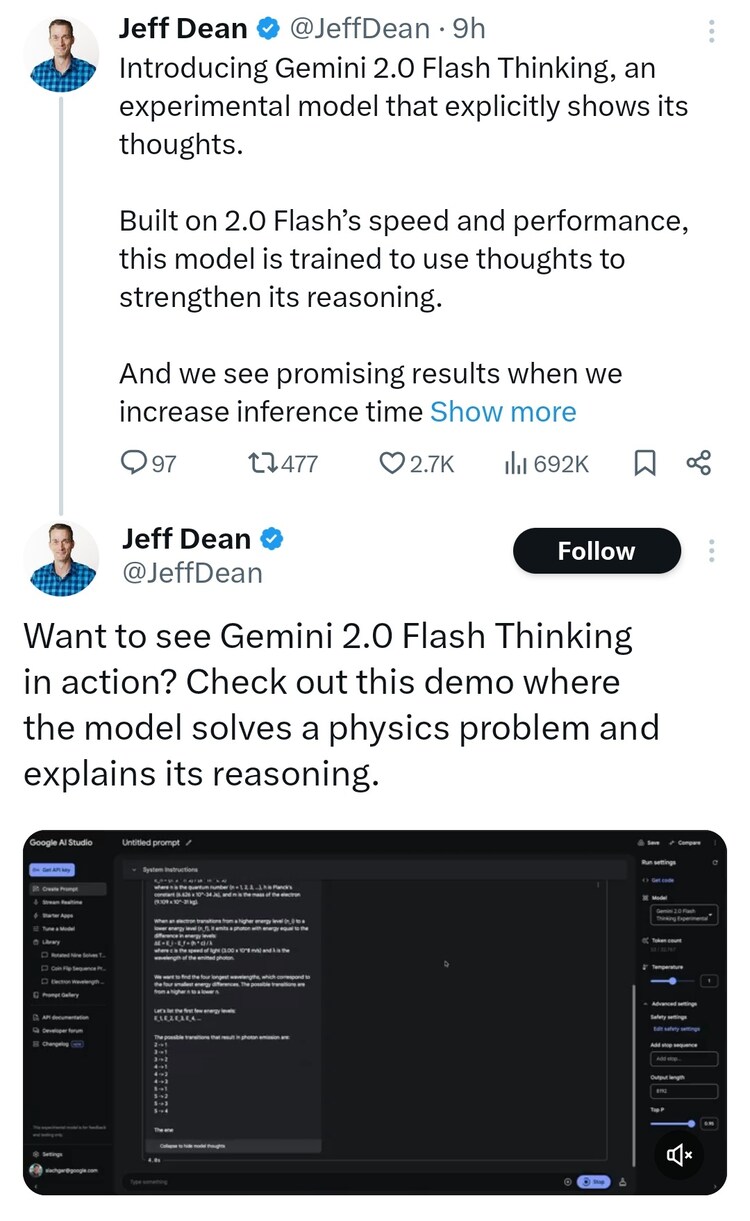Google launches Gemini 2.0 flash thinking mode, a reasoning model similar to OpenAI o1
Google’s new reasoning model allows Gemini 2.0 to tackle a variety of tasks that demand logical thinking, deep analysis and decision making.
listen to the story

Google has unveiled a new feature in its Gemini 2.0 models, called Flash Thinking Mode. The model is designed to boost the cognitive performance of Gemini 2.0, enabling the model to engage in more logical and complex signals. Although, similar to OpenAI o1, Flash Thinking Mode does not have flash quality, it takes a good while to solve complex problems. I. The time in demo by the company is a little faster than others.
In a post, Google DeepMind chief scientist Jeff Dean shared that the new model is “trained to use ideas to strengthen its reasoning.”

The new model, called Gemini 2.0 Flash Thinking Experimental, is now available on Google’s AI prototyping platform, AI Studio. According to its model card, it excels in multimodal understanding, reasoning and coding, with the ability to tackle the most complex challenges in areas such as programming, mathematics and physics.
How does Gemini 2.0’s Flash Thinking Mode work?
When given a prompt, the Gemini 2.0 Flash Thinking Experimental pauses before responding, considering several related prompts and “explaining” its reasoning along the way. After a while, the model presents a summary of the answer it considers to be the most accurate answer.

This new reasoning model enables Gemini 2.0 to handle a wide range of tasks that require logical deduction, critical analysis and decision making.
This free version has a token limit of 32,767, making it more restrictive than other Gemini models. However, based on demos, its speed at tackling complex problems that typically challenge traditional AI models is impressive. The launch demo includes puzzles, probability problems, and other tasks requiring advanced reasoning.
Google’s Gemini 2.0 Flash Thinking Mode vs OpenAI o1
A key difference between Google’s approach and OpenAI is that Gemini 2.0 reveals its reasoning process while FlashThinking works, whereas OpenAI’s model keeps its thinking process hidden. This transparency is important for users who want to track the logic of the model and ensure that there are no hallucinations during long chains of thought.
Another big difference is that Google’s AI Studio allows users to adjust security settings to test different reactions. For example, users can modify settings related to harassment, hate, dangerous, and explicit content and see how these adjustments make an impact.Odell’s reasoning abilities.
